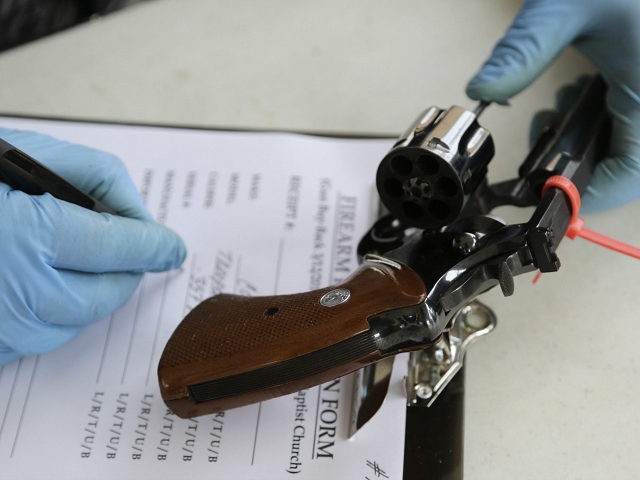On May 31, the New York Times ran an opinion column which suggested that now is the time to register every gun and fingerprint and photograph every gun owner.
The author of the column — Alan Berlow — cited the National Firearms Act of 1934 (NFA) as precedent for such sweeping controls and suggested the NRA and other Second Amendment proponents have no ready defense against registering, fingerprinting, and photographing gun owners.
Leaders of the National Rifle Association rarely talk about the [NFA], and that’s probably because it imposes the kinds of practical — and constitutional — limits on gun ownership, such as registration and background checks, that the NRA regularly insists will lead to the demise of the Second Amendment.
For those of you who are not familiar with the NFA, it is basically a tax and registration law for firearms and firearm accessories that fall under its purview. That would be machine guns, silencers, short barreled rifles, etc.
Note that Berlow praises this act as “practical” without considering its most immediate ramification — it drives the price of NFA firearms and accessories up due to the federal tax added to the sales price. Moreover, it extends the wait for NFA firearms from instant to months at a time. A wait time of 5 to 6 months for government approval — via the receipt of a federal tax stamp — is not uncommon.
But these are just two of the obvious things Berlow misses. Less obvious, but no less important, is the insidious history of the NFA. Once it was on the books, it was became something pro-gun control politicians could expand when holding sway in Congress. Therefore, it was amended in 1968 — via the Gun Control Act signed by President Lyndon Baines Johnson (D) — and amended again in 1986.
According to the Bureau of Alcohol, Tobacco, Firearms, and Explosives (ATF), the 1968 changes expanded the meaning of “machine gun,” thereby widening the number of weapons covered by NFA regulations. The 1986 changes expanded the meaning of “silencers” — thereby bringing more firearm accessories under the umbrella of NFA regulations, incrementally broadening the instances in which registration, fingerprinting of gun owners, and photographing of said owners is required.
Additionally, the 1986 changes barred civilian possession of any machine gun not already in civilian possession by May 19, 1986. This immediately shrank the pool of available NFA firearms and resulted in 21st-century machine gun prices that are through the roof. A price of $30,000 to $40,000 — or far higher — is not uncommon for a machine gun, and don’t forget the federal government’s tax.
This is exactly why the NRA opposes putting more gun control on the books, and it is especially why they oppose those controls that Berlow describes as “practical.” What is “practical” about allowing the government to insert itself between an American and the exercise of a God-given right in such a way that requires the person to pay a tax to exercise his right? What is “practical” about requiring that person to register, be fingerprinted, and submit to being photographed in order to exercise his right?
Moreover — and, perhaps, most of all — what is “practical” about passing legislation that allows future legislators to step in and expand definitions while simultaneously limiting supply, thereby driving the prices for an entire category of firearms beyond the reach of all but the wealthiest Americans?
Far from “practical,” such an approach is an affront to freedom.
AWR Hawkins is the Second Amendment columnist for Breitbart News and political analyst for Armed American Radio. Follow him on Twitter: @AWRHawkins. Reach him directly at awrhawkins@breitbart.com.

COMMENTS
Please let us know if you're having issues with commenting.